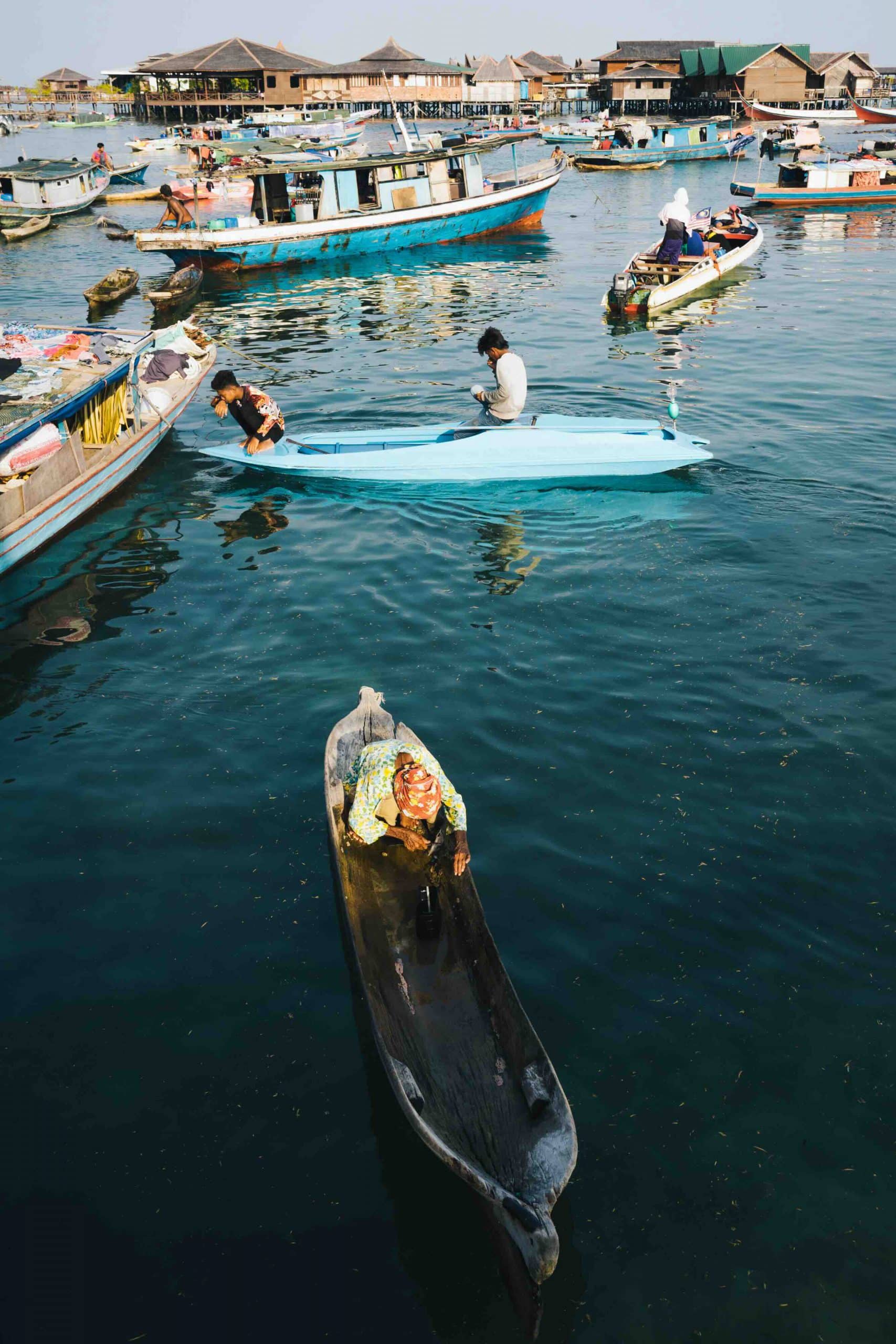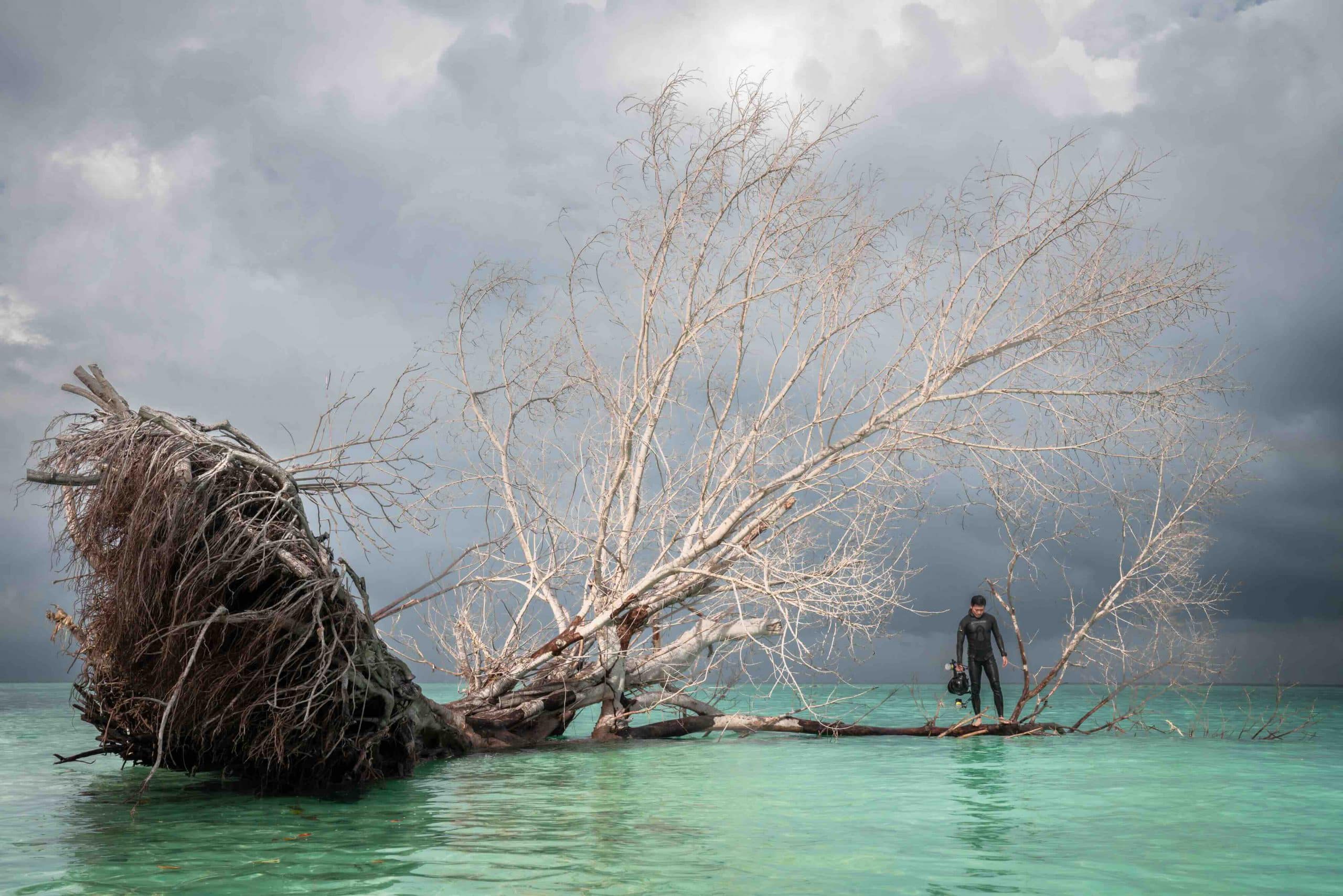Thien Nguyen
Few communities in the world can boast as deep and sacred a connection with the sea as the legendary Bajau people of Mabul Island in Malaysia – a group once dubbed “the people who live under water”. For centuries, these true sea nomads have lived, traveled, and bonded with the vast waters of the Coral Triangle – where Malaysia, Indonesia, and the Philippines converge – one of the richest marine biodiversity hotspots on Earth.

Ocean people
The Bajau people have no nation – they are citizens of the sea. Their traditions don’t stem from land but from the waves, tides, and coral reefs. The Bajau Laut sea nomads once spent their entire lives aboard small wooden boats called lepa-lepa, anchoring between islands or building wooden huts on stilts over the shallow reefs near shore. They needed no maps or navigation tools, for their knowledge of currents, monsoons, marine life, and fishing grounds was passed down orally through generations – a living map, not found in books.
The Bajau’s remarkable adaptation to their marine environment has fascinated scientists. Recent studies reveal that the Bajau can dive to depths of over 70 meters and hold their breath for up to 13 minutes – feats beyond the capabilities of most modern humans. Over time, their bodies have adapted with larger-than-average spleens, enabling them to store more oxygen during free dives. Without scuba tanks, they rely solely on handmade goggles and simple spearguns or metal hooks, diving to hunt fish, octopus, and shellfish – primarily for subsistence, and occasionally for trade.

From nomadic life to settlements
Over time, particularly in recent decades, the Bajau’s nomadic lifestyle has gradually declined. This shift is partly due to pressure from regional governments to encourage permanent settlement for easier population management and access to services such as healthcare and education. It is also driven by climate change and the depletion of marine resources, which threaten their traditional way of life. Today, many Bajau have chosen to settle on the mainland or on islands, especially on Mabul Island, which is often seen as a “transit station” between tradition and modernity.
Today, as well as being home to the Bajau community, Mabul is a world-famous diving destination, thanks to its proximity to the legendary Sipadan reef, considered one of the best dive sites on the planet. This island has gradually become a gateway for eco-tourism, drawing diving enthusiasts from around the world to explore the area’s magnificent marine world: immense schools of barracuda numbering in the thousands, shoals of jackfish, humphead parrotfish, green sea turtles, whitetip reef sharks, blacktip reef sharks, and hammerhead sharks.
The Bajau who have settled on the island are called Bajau Darat or “Land Bajau”. They build stilt houses along the coast and earn a living through eco-tourism, commercial fishing, or providing services for dive centers. However, most Bajau Laut – those who still maintain their nomadic ways – only visit the island when necessary: to collect freshwater, buy supplies, trade seafood, or for rare occasions like funerals. For them, being on land feels “strange,” even uncomfortable – a sensation they describe as “landsick,” the opposite of the seasickness experienced by land-dwellers.

What does their future hold?
Amid the crossroads of conservation and development, the future of the Bajau remains uncertain. Some marine and cultural preservation organizations have begun partnering with local communities to promote sustainable tourism, recognizing the Bajau as “indigenous people of the sea” and placing them at the center of efforts to protect both the ocean and their cultural heritage. Initiatives such as Bajau-led diving tours, “sea nomad life experience” programs, and marine education for Bajau children are currently being piloted on Mabul and nearby islands.
Alongside these efforts, the Bajau are working to uphold their wishes to be respected, remain true to their identity, and freely choose between tradition and modernity, rather than being forced to abandon one for the other. Amid the endless waves and inevitable changes of time, the Bajau continue to carry untold stories of those who dive deep into the ocean’s heart, of ancestral spirits dwelling among coral reefs, and of living in harmony with the sea – lessons the modern world is now striving to relearn.
Traveling to Mabul is not just about diving, admiring coral reefs, or photographing sea turtles. It is also an opportunity to listen to the stories of those born and raised in the heart of the ocean. Perhaps, drifting in a Bajau wooden boat, rocking with the waves, you will feel small on the vast ocean and understand why some people will always call the sea home.










